What trends will define wine in 2017?
Various factors are in play. With such diversity among global products, and with Millennials gaining more interest in the category, effective marketing remains important. And there are plenty of trends that transcend Millennials and marketing — like the continued rise of bubblies and blends.
So as we enter 2017, here are seven trends to watch in wine:
1) Millennials Shape The Wine Market
The last Millennials reached legal drinking age in 2016. Now that the whole generation has had at least one year of legal drinking under their belt, what does this mean for wine?
It’s an especially important question considering a report last year by the 11th Annual Wine Market Council Research Conference that found that 36% of wine drinkers in 2015 were Millennials. That percentage is sure to have climbed in 2016, as
older generations age out, and more Millennials gain connoisseurship in alcohol, not to mention better-paying jobs that increase their disposable income.
So what does this generation want from wine?
For starters, many Millennials do not care about how long a wine has aged. This is also partly why age statements are disappearing from whiskey. Although Millennials do care about the history of a brand, they typically do not fixate on whether the product itself has aged.
One key is to grab Millennials’ attention with eye-catching branding. That has helped a brand like The Federalist take off. According to data from our sister company The Beverage Information And Insights Group, this Terlato Wines brand grew 423.8% in U.S. sales between 2014-2015 (21,000 9-liter cases to 110,000). The colonially themed packaging of The Federalist stands out on the shelf.
So does the branding for 19 Crimes. This Treasury Wine Estates hit grew 138.1% between 2014-2015 (106,000 cases to 252,000). Here again is a noticeably creative label.
Both brands also play into cultural heritage. The Federalist is a nod to colonial America, while 19 Crimes references Australia’s past as a penal colony. Cultural relevance appeals greatly to Millennials, especially when the cultural aspect appears “authentic,” whether that places the product in the past or present.
Perhaps more so than any other generation, Millennials also love to explore through parts unknown. “We see that younger Millennial consumers are interested in trying new varieties and wines from regions they may not have heard of,” says Jordan Sager, vice president of Winesellers.

19 Crimes.
Their favorite foreign varietals hail from Portugal, South Africa, Greece and Austria, according to that report. And they like to explore around America, buying more from Washington, Oregon and New York than other age groups — and less from California.
Expect to see bottles from across the world end up in the hands of U.S. Millennials throughout 2017.
2) Affordable Bubblies Transcend Holiday Sales
Sparkling wine has not yet completely overcome its reputation as a holiday treat. This category still sells nearly three times as much in December as in any other month.
But at the same time the category has enjoyed a steady climb in sales for 14 straight years. For instance, starting in 2009, the category sold 14.6 million cases, followed by 15.2 million in 2010, 16.1, 17.0, 17.5, 18.3, 19.8 in 2015, and a projected 21.1 million cases in 2016. That final forecasted number would represent a 6.1% increase over the prior year.
The market-mover here is not champagne, which grew “only” 8% in 2015, according to Nielsen. While that’s obviously a nice gain, it pales in comparison with Cava’s 36% increase in sales in 2015, or Prosecco’s +31%. (Rosé in general grew 31.8%.)
Why the rise in some bubblies over the other? The likely answer is price.
Champagnes remain a premium product in the mind of consumers, whether actually priced that way or not. Less-expensive Prosecco and Cava have become go-to sparkling wines for ladies nights or someone’s weekly glass of indulgence. They’re affordable luxury.
Of customers who purchased Prosecco in 2015, 31% did not buy any sparkling wine in 2014, according to the Wine Market Council report. And 72% of Prosecco purchasers who had bought it before reported buying it in greater quantities in 2015.
As more consumers, especially Millennial women, come to see Prosecco and Cava as a price-acceptable means to scratch that wine itch, while also offering a taste of upscale lifestyle, then the entire sparkling category will continue to increase in sales beyond the holiday spike. Look for Prosecco, and sparkling Rosé in particular, to reap these benefits in 2017.
3) Red Blends Remain Hot
Like in other alcohol categories, “blend” is losing its pejorative sense in the minds of consumers. Fewer people think of blends as being lower in quality than single-variety bottles. (Same goes for blended whiskeys vs. “straight” or single-malt expressions.)
The result is that red blends grew 10.1% in sales in 2015, according to the Wine Market Council report.
Many winemakers say there’s nowhere they’d rather be than at their blending table. And it shows in the quality of the red blends now on the market, which are well-balanced drinking experiences in ways that some single-varietal bottles cannot always match.
In this manner, “blended” is beginning to take on a much different meaning for consumers. They see it less as indication of “inferior” and being more about “handcrafted,” “quality” and “premium.” The word is in the process of turning 180° in meaning.
4) Lower-ABV Wines Provide Options
The sparkling craze has also helped support the growth of another trend: lower-proof wines. These are products with ABVs 13% or below. Most of them are bigger in fruit and sweet flavors, tend towards whites, and with noticeably tamer tannins.
What’s given rise to this trend is the increasing popularity of easy drinking. This means alcohol that’s consumable over time in a way that will not booze you up beyond the point of comfort. (Session beers play into this as well.) Picture a beach picnic on a sunny summer day, lazily drinking low-ABV wine or session IPAs.
Or even during winter months, these wines are something to sip on while binging TV or watching a sports game, as they will not prevent you from getting chores done after the program concludes.
5) Women Continue To Buy More Wine
Wine sales tilt towards the female demo. Women made up 57% of wine sales in 2015 according to the Wine Market Council report, while representing only 33% of beer sales and 40% of spirits.
What are women looking for in a bottle? According to the data, 66% of wine purchases by women are planned while 22% are impulse. The majority of these impulse purchases are based on wine that stands out on menus or store shelves. The key is to create moments that capture women’s attention.
Regarding labels, 46% of women said they were intrigued by “traditional/classic/sophisticated” designs. 39% were intrigued by “fun and fanciful” looks, while 37% noticed labels that indicated “organic/sustainable” wines.
“Witty and clever” attracted 36% of respondents, and “benefitting a cause I’m interested in” intrigued 30%. Lower on the list were “flirty and feminine” at 29%, “modern” at 27% and “brightly colored” at 27%.
6) Whiskey Works Its Way In
Not literally, of course, but there has been blending of these two categories in recent time through the swapping of barrels.
Plenty of brown spirits have spent time in used port or sherry casks. It makes sense, then, that winemakers in turn would age their product in something that once held whiskey.
Hence the rise of bourbon-barrel-aged wines. This plays into multiple consumer trends.
First, in a category that has more female buyers, it might make a male reconsider a wine when normally he only drinks brown spirits or bourbon-barrel aged beer. It also dovetails nicely with the craft spirits movement, leaning on the rise of whiskey to help sell some wine.
And thirdly, it allows winemakers another way to label their bottles to appear unique and different among the hundreds of other wines on the shelves or menu.
Remember: many modern consumers, Millennials especially, will favor whatever’s new and intriguing. Buying a bourbon-barrel-aged wine is an easy way to have something cool and different at their dinner outing or social gathering.
7) Social Media Matters
Since so much of wine purchases are now based on what seems intriguing, different or culturally relevant, then it makes sense that social media will remain so relevant. Brands that have digitally positioned their products in ways to appeal to modern consumers enjoy a considerable advantage.
For instance: 14 Hands. This brand from Ste. Michelle Wine Estates is featured at concessions and suites at Churchill Downs during Kentucky Derby week. This partnership is great for “providing content for social media as well as fantastic retail displays leading up to the May race,” says Rebekah Gunderson, marketing manager of supplier Ste. Michelle Wine Estates.
14 Hands leveraged social content created from its Kentucky Derby tie-in to become a more culturally relevant brand in the eyes of consumers. Unsurprisingly, 14 Hands grew 11% in 2015 to 1.84 million cases.
Another example is the colonially themed The Federalist, mentioned above. This brand has appealed to Millennial males through cheaky social posts, and an app that allows users to “Federalize” themselves in the style of The Federalist label art, and then share these funny images their friends.
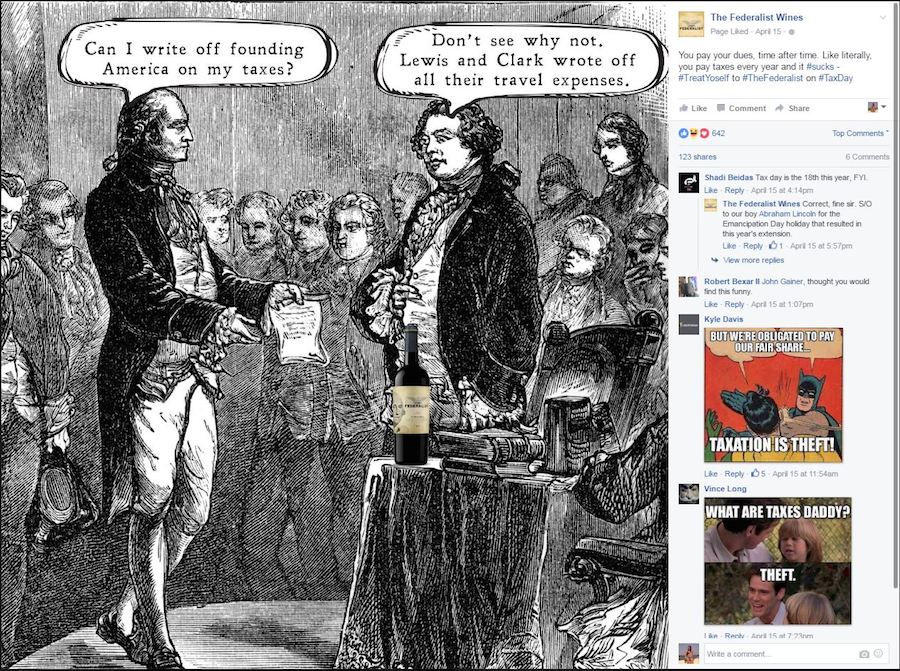
Effective social media like that of The Federalist can send consumers into stores and restaurants already feeling positively connected with a brand.
Hashtag campaigns have also proven effective with wine. Especially when promoting lifestyle appeal or the fun of impulse/explorative purchases. The new Ste. Michelle Wine Estates brand Motto recently launched a social media campaign called #WhatsYourMotto. The hashtag “encourages people to share their mottos as it relates to wine and their lifestyle,” says Gunderson.
Look for wine brands that have figured it out on social media, as customers will come into stores and restaurants with those wines already on their minds.
Kyle Swartz is managing editor of Beverage Dynamics Magazine. Reach him at KSwartz@epgmediallc.com. Read his recent piece on 7 Whiskey Trends To Watch In 2017.

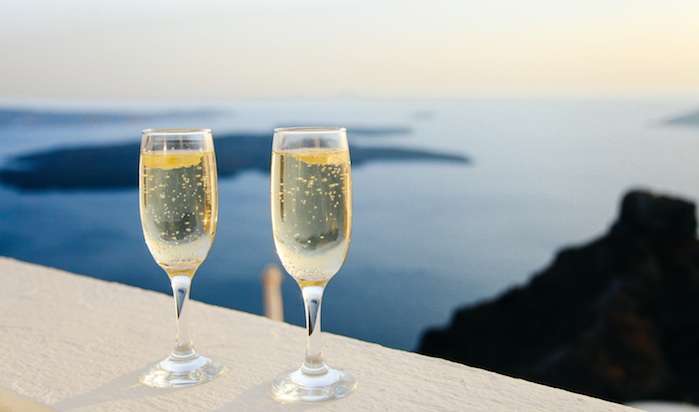

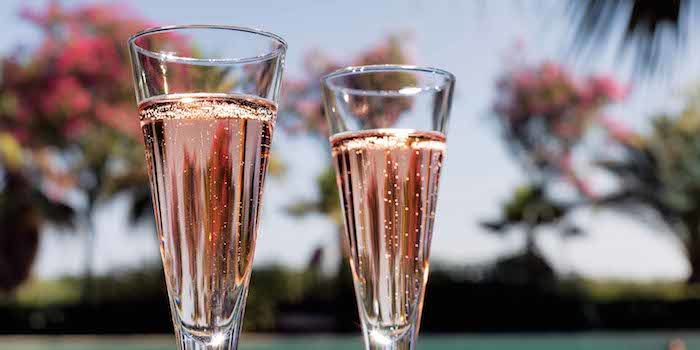
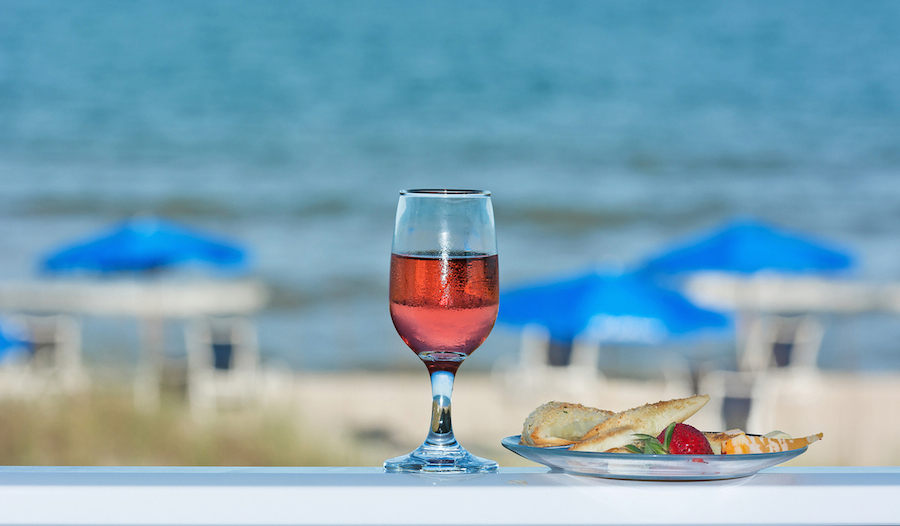

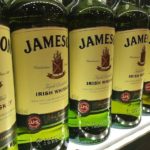
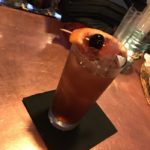


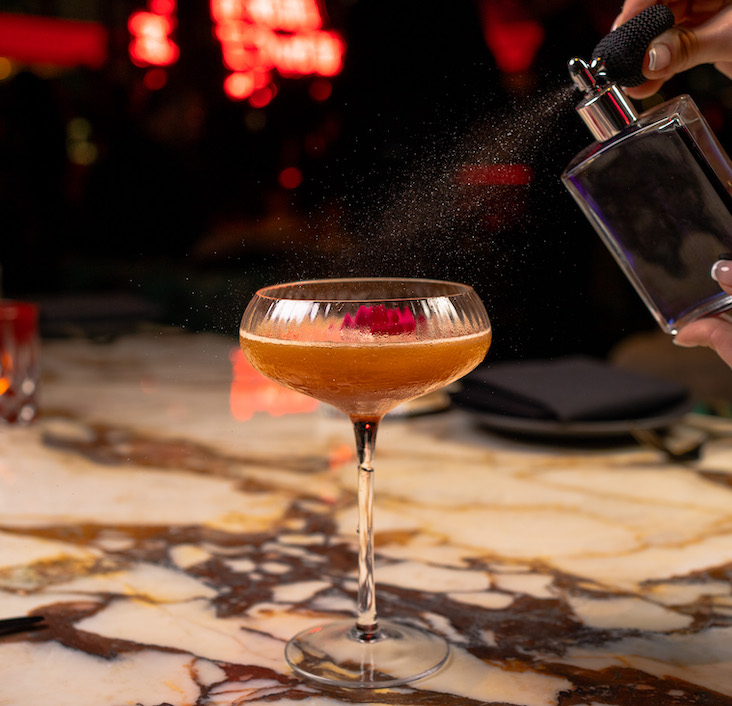
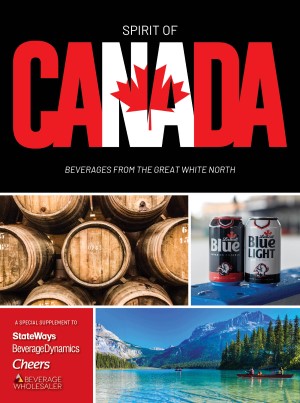
[…] to cheerstest.wpengine.com […]
[…] http://cheerstest.wpengine.com/2017/01/17/7-wine-trends-to-watch-in-2017/ […]
[…] differences that are driving the change of trends within the wine industry. Kyle Schwartz of Cheers Online […]
[…] Schwartz of Cheers Online […]